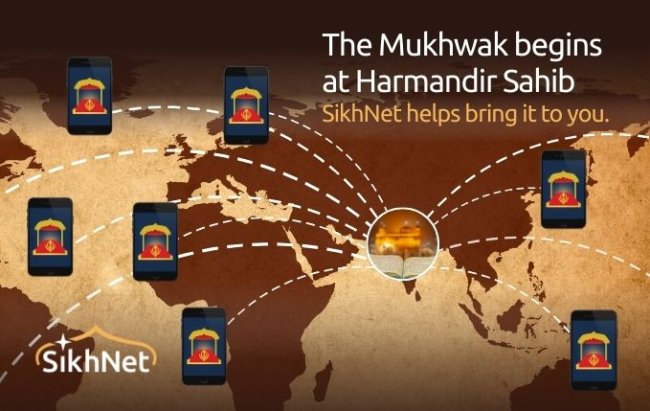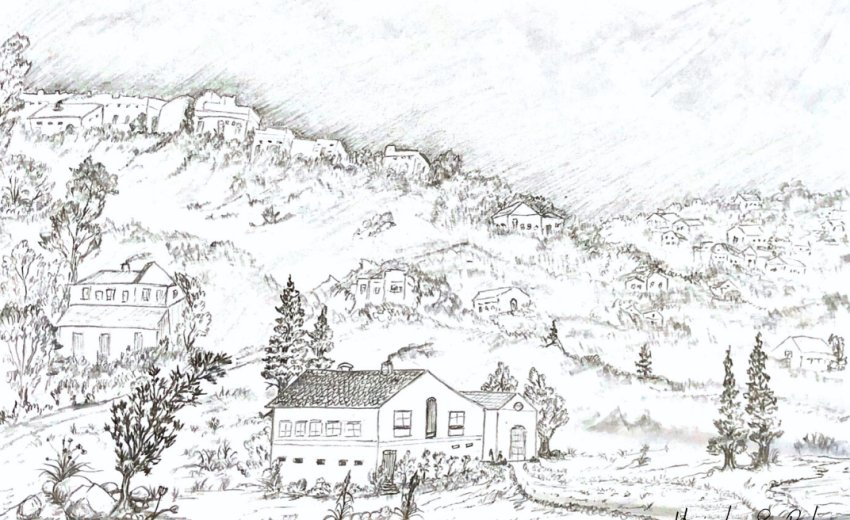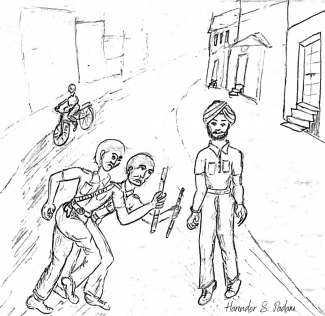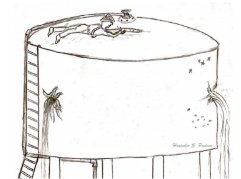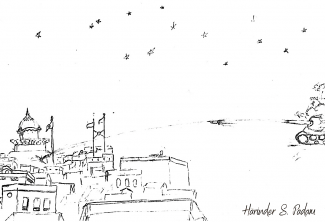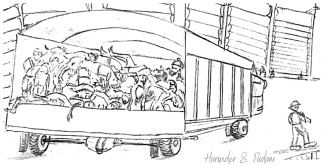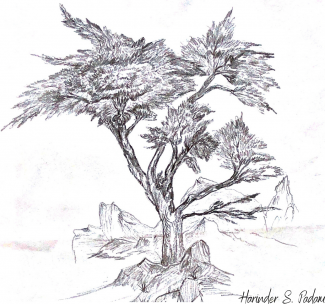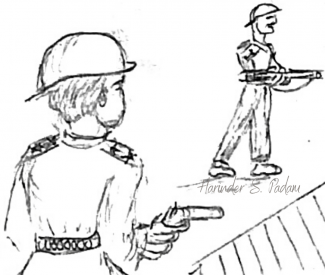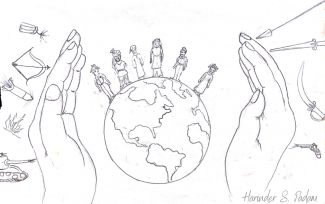Sikhs can relate all too well to the protests for justice, police brutality, people dying in police custody, wrongful arrests, violation of civil and human rights and liberties, torture, and mass murder. This week is the 36th anniversary of the Sikh community's historical trauma. For the survivors and victims of the June 1984 massacres that killed thousands, there may be a heightened sense of anxiety, anger, depression, post-traumatic stress disorder (PTSD) exacerbation, and other chronic stress responses. The persistent cycle of trauma and it's acuity is superimposed on the distressing current state of civil unrest and Black Lives Matter call for justice and action. Emotions are amplified and this is an opportunity for the Sikh collective to process what is happening today, from the lens of compassion and understanding for not only the African American community but also ourselves. The stories cannot be hushed or denied anymore. The hurt has not been fully validated because the mainstream media dismissed the civilian perspective. It is time to heal, acknowledge, and tell our stories.
Much of what I remember of the Sikh massacres of June 1984 is through my dad's vision and his voice. The tenderness of his expressions and his soft tone reverberates through my mind as he shared his account, diluted to compensate for my age. My feelings and memories of that year are so intermingled with his that I can't tease them apart anymore.
Dad bore witness to the events leading up to June and the attack on the Akal Takht and the Darbar Sahib (the "Golden Temple," to foreigners) complex June 1st -10th. Later in November that year, he narrowly escaped the Sikh massacre of New Delhi in November 1984.
When I was little, I remember reading news articles and hearing hushed conversations about innocent Sikh civilian boys and men who were picked up by the police and "disappeared"—never to return home alive or whole again. Sadly, such frequent occurrences became more prevalent in the years to follow. Though we had later moved further away, dad still had his business in Punjab, and I often accompanied him on his business trips. The summer of 1984 was going to be different. Dad said that there was an increased Indian military presence in the surrounding areas and our neighborhood in Amritsar. This time, he went to Amritsar alone. Shortly after that, the military sealed the Amritsar border. Amritsar had been disconnected from the outside world.
The military took over the nearby buildings and schools. Dad had a feeling that "something bad was about to happen (ਇਥੇ ਕੁਝ ਬੁਰਾ ਹੋਣ ਵਾਲਾ ਹੈ)." So he stayed to find out. "There was a curfew, and no one could go in or out. There was a shoot-at-sight order, and everyone was to remain indoors.Electricity and water supply to the surrounding neighborhood were shut off."
The city-style tall and narrow homes of Amritsar surround the Darbar Sahib's complex. My ancestral home is one of them. From the top of the house, just one street over from one of the complex's main entrances, through the Jali alcove, Dad was able to see the series of assaults that followed for the next few days. The Indian military attacked the Darbar Sahib complex, the Akal Takht, the highest temporal seats of authority for the Sikhs, and dozens of other Gurdwaras in Punjab. "It was dark, and the attack continued through the night". There were several "booms!" he would remember. A cannonball was shot to the gurdwara water tank to cut the water supply (ਪਾਣੀ ਦੀ ਸਪਲਾਈ ਕੱਟਣ ਲਈ ਤੋਪ ਦੀਆਂ ਗੋਲੀਆਂ ਗੁਰਦੁਆਰੇ ਦੇ ਪਾਣੀ ਵਾਲੀ ਟਕੀ 'ਤੇਚਲਾਈਆਂ ਗਈਆ)ਂ .."
Every year, thousands of pilgrims visit or stay at the Darbar Sahib to observe Guru Arjan Sahib's martyrdom anniversary, on June 3, 1984. These were some of the hottest and the busiest days of the year, and the pilgrims were trapped inside. The military used cannons, tanks, machine guns, helicopters, and other military weapons to attack. From the smoke emanating from various other Gurdwaras around, it was apparent that the target was Harmandir Sahib and any other Sikhs centers. The elderly, children, women, babies, and other innocent civilians were no bar. The strikes continued, days and night, until June 7.
Pilgrims laid face down on the hot marble, their hands tied behind their backs. In the heat of the full sun, the injured and the helpless civilians were denied shade, water, food, or access to the restrooms. They were beaten or left for dead and lying in pools of blood and excrement. Thousands of people perished in the unimaginable horror which covered the entire parkarma (the peripheral walking area around the Darbar Sahib). The sky and the "Sarovar [water body surrounding the Golden Temple] was red (ਸਰੋਵਰ ਲਾਲ ਹੋਿਗਆ ਸੀ).
"From the rooftop, at night, he saw the military trucks passed one by one...Truckloads of corpses were being transported out of the Darbar Sahib complex. "I lost track of how many." Trucks were filled with "thousands of corpses and more corpses...(ਹਜ਼ਾਰਾਂ ਲਾਸ਼ਾਂ ਈ ਲਾਸ਼ਾਂ...)." Though he didn't know for sure at the time, it was confirmed later that the dead were being mass cremated. Then, the mainstream media reported a little over 400 civilian deaths. Sikhs remove their shoes before entering the Gurdwara as a sign of respect and reverence. Per many other eye witness accounts, "an estimated ten thousand never returned to claim their shoes from the entrance to the Darbar Sahib."
My father was a master craftsman and an artist, a peace-loving man, possibly mother nature's biggest admirer. Over the years, I watched his art fade from colorful and vibrant to then mostly monotone black and white. He didn't use color much or draw people anymore unless upon special request. His unspoken pain, despondency, memories, and wounds became mine.
In the last decade of his life, as he was fading away to dementia and Parkinson's, he spoke less and less. In 2012, I asked him to pencil a few sketches of what he could recall of 1984. Through the tremors of the hand, he sketched a few prominent memories he had shared with me decades earlier and then dated them June 4th and 5th, 1984. Even though he did not remember people and their names, his sketch lines were confident and final. He remembered 1984. He did not forget. He tried to tell his story, if not through words, through his sketches. The only time he would relive the trauma was in his delirium when he got sick or ended up in the hospital. He would grab my forearm and whisper to me that he sees body parts and blood everywhere. My dad recently passed away, and I wish I had asked him to draw out more memories and stories.
The Indian government was unsuccessful in the systematic attack intended to destroy the spirit of the people, destroy Sikh history, and uproot the culture. But the trauma inflicted upon the Sikh people for decades continues to live on too. Sikhs suffer, silently the lingering effects of personal and community-specific Historical Trauma, passed down to the next generation. We will never forget the Sikh Genocide.
It is time for intergenerational healing for the victims of ethnic violence. The cumulative acts of barbarity endured by the Sikh people are a testament to our resilience and perseverance. There is healing in compassionate solidarity. Let us be empowered to embrace the Black community and the Black Lives Matter call to action. Let us show our fellow citizens how we can compassionately hear horrific stories humanely, and acknowledge lovingly. From my father's story, I know that there is restorative justice not only in standing against institutionalized racism and other marginalized minorities but also in being heard, through whatever voice and medium we have. Listening is an act of love. Love, which Sikhism stands for. For all living beings as equals and respect for all of the human race as One.
Acknowledgements:
Artwork: Harinder S. Padam in 2012 while grappling with moderate dementia and early Parkinson’s
Editing: Mallika Kaur and Mohena Kaur
Transcription: Aekash Singh and Arzoe Kaur
About the Author:
Dr. Gurpreet K. Padam, is a family medicine, palliative medicine and hospice physician whose path to medicine was largely influenced by the massacres of June and November 1984. In 2009, she co-founded a free medical clinic, which as of 2014 is housed in the San Jose Gurdwara, California as the Guru Nanak Free Medical Clinic. She is a founding board member of the Sikh Family Center and also serves on the boards of several medical and health-care organizations in the Bay Area.
